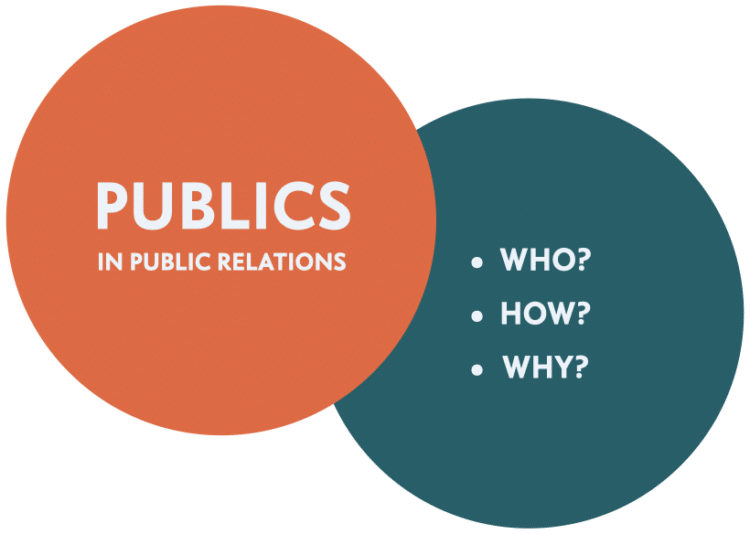We can use personas in PR, too.
In marketing, the use of “marketing personas” is commonplace. As in most marketing-related things, these personas are mostly derived from demographic generalisations.
In PR, it makes more sense to group personas based on pre-existing communication behaviours — related to specific issues.
Here we go:
The Marketing Persona: “Anna”
Spin Academy | Online PR Courses
Example of a “Marketing Persona”
Learn more: How To Use Personas in PR
💡 Subscribe and get a free ebook on how to get better PR ideas.
The PR Persona: “Dave”
Spin Academy | Online PR Courses
Example of a “PR Persona”
Fundamentals
Psychographics
Communication Style
Media Habits
Influences
Goals
Challenges
Learn more: How To Use Personas in PR
💡 Subscribe and get a free ebook on how to get better PR ideas.
Which Persona Type Is Best?
Personas are used to make it easier to visualise, understand, and influence different types of people. However, a persona is a tool.
Which tool is the best? Well, it depends on the job.
Marketing personas are arguably better for tailoring marketing messages. The demographic approach is especially useful for promoting brands, products, and services via paid media (one-way) channels.
PR personas are arguably better for tailoring two-way interaction with stakeholders, publics, and influencers in a specific situation.
It’s also common for marketing- and PR personas to overlap. Both will typically focus on channel choices, media consumption habits, and goals.
Personas in marketing (demographics) will typically be more stable over time. Personas in PR (psychographics) are typically more precisely connected to a situation important to the brand.
The main weakness of marketing personas is that demographic grouping is weakly correlated to shared communication behaviours. The main weakness of PR personas is that they only apply to a specific situation.
Read also: The Publics in Public Relations
Why Use Personas in PR?
A PR persona can outline psychographic characteristics, styles of communication, and media preferences. A PR persona can help PR professionals tailor communication strategies to effectively engage with individuals who share similar communication behaviours.
The idea is to engage in two-way communication (dialogue) with a better understanding of the other end of the conversation.
The basic premise is simple:
“We don’t see things as they are; we see things as we are.”
— Anais Nin
Self-image is a powerful motivator; people are more likely to respond positively to messages that resonate with their perception of themselves. This alignment is crucial in PR — when the suggested action or message aligns with an individual’s self-image, compliance and engagement are significantly more likely.
The Concept of Seriality
Spin Academy | Online PR Courses
Seriality: Context Matters
“Seriality” is a concept that emerges from identity- and social theory, particularly in the works of philosophers like Jean-Paul Sartre and Iris Marion Young. It refers to how individuals are grouped based on shared characteristics — without a strong sense of belonging or identity.
“Seriality is a key concept in understanding the constancy and transformation of identity, particularly in public presentations of the self and its online manifestations.”
Source: M/C Journal 1Marshall, P. (2014). Seriality and Persona. M/C Journal, 17, 1 – 10. https://doi.org/10.5204/mcj.802
In Sartre’s existentialist framework, seriality describes a form of social collectivity. According to him, people can be part of a series without necessarily sharing a unified group identity. For example, people waiting at a bus stop are connected by their shared situation (waiting for the bus) but do not necessarily form a cohesive group with a shared identity. They are a series of separate individuals, linked by a common objective or condition.
Seriality, therefore, is a way of understanding how individuals can be part of collective categories without necessarily having a shared demographical identity.
Learn more: The Publics in Public Relations
💡 Subscribe and get a free ebook on how to get better PR ideas.
Beware of Hasty Generalisations
The idea behind creating a persona in PR- or marketing is to establish a useful generalisation. However, a generalisation will always be a generalisation, so we must always remind ourselves that such assumptions can cause harm.
This is where personas in PR typically outshine personas in marketing:
Should we really be tailoring any marketing- or communication activities based on people’s ethnicities, sexual preferences, or income classes?
While it certainly can be done with the best of intentions, the question still lingers:
Should we?
Adapting your communication to people’s shared choices (of why, where, and how) in a specific context is a more agnostic approach to marketing- and corporate communication segmenting.

Thanks for reading. Please consider sharing my public relations blog with other communication and marketing professionals. If you have questions (or want to retain my PR services), please contact me at jerry@spinfactory.com.
PR Resource: The Publics

Spin Academy | Online PR Courses
The Publics in Public Relations
Here’s how to define publics in public relations:
Publics in PR = a psychographic segment (who) with similar communication behaviours (how) formed around a specific issue (why).
Please note:
Psychographic segment = similarities in cognitive driving factors such as reasoning, motivations, attitudes, etc.
Communication behaviours = how the public’s opinion is expressed (choice of message, rhetorical framing, and medium type).
Specific issue = determined situationally by a specific social object, often high on the agenda in news media or social media.
Learn more: The Publics in Public Relations
💡 Subscribe and get a free ebook on how to get better PR ideas.
ANNOTATIONS
| 1 | Marshall, P. (2014). Seriality and Persona. M/C Journal, 17, 1 – 10. https://doi.org/10.5204/mcj.802 |
|---|
























